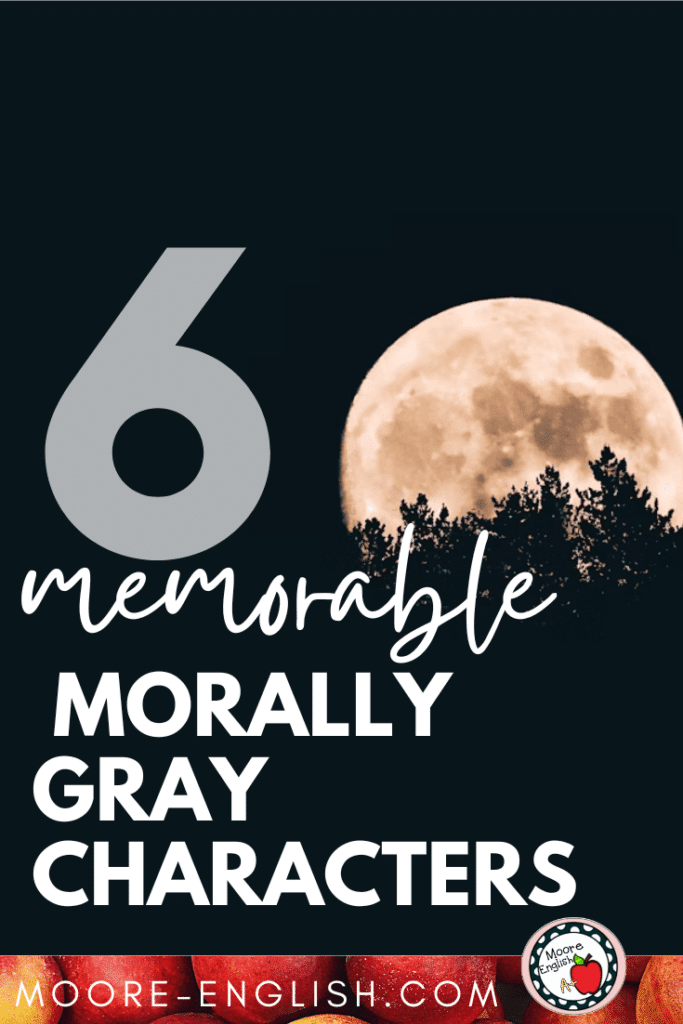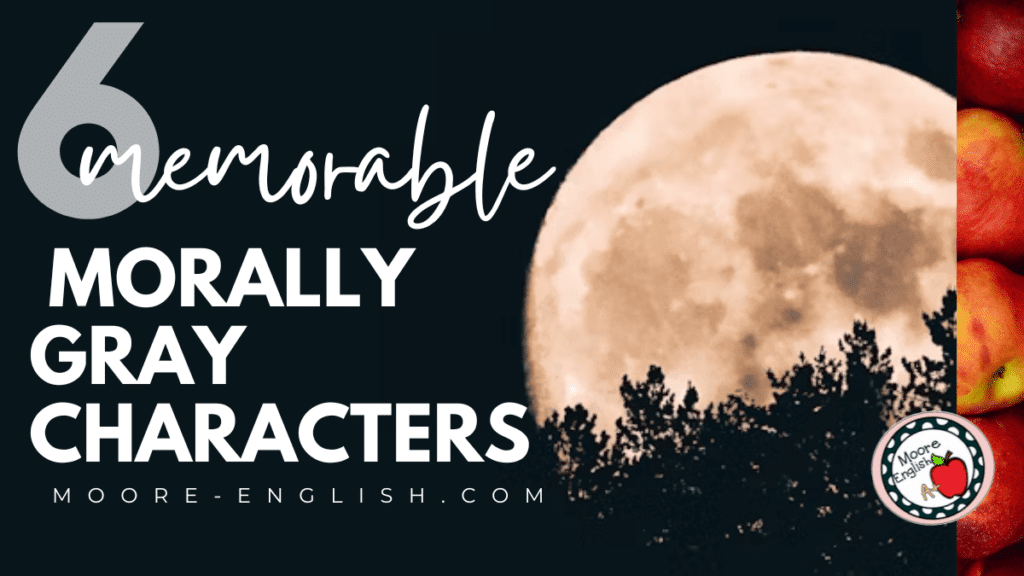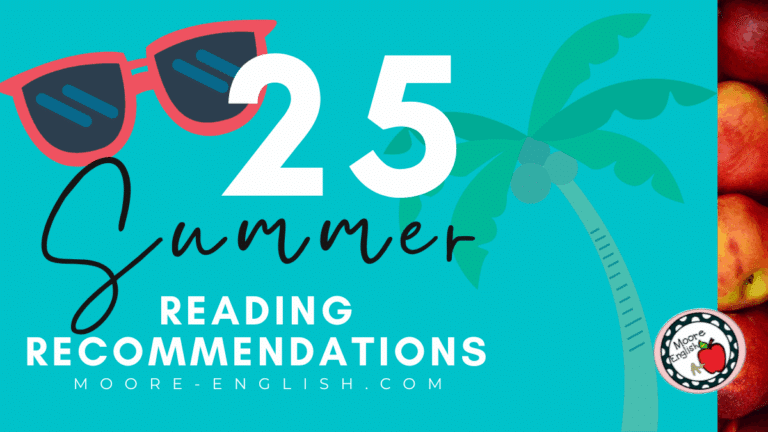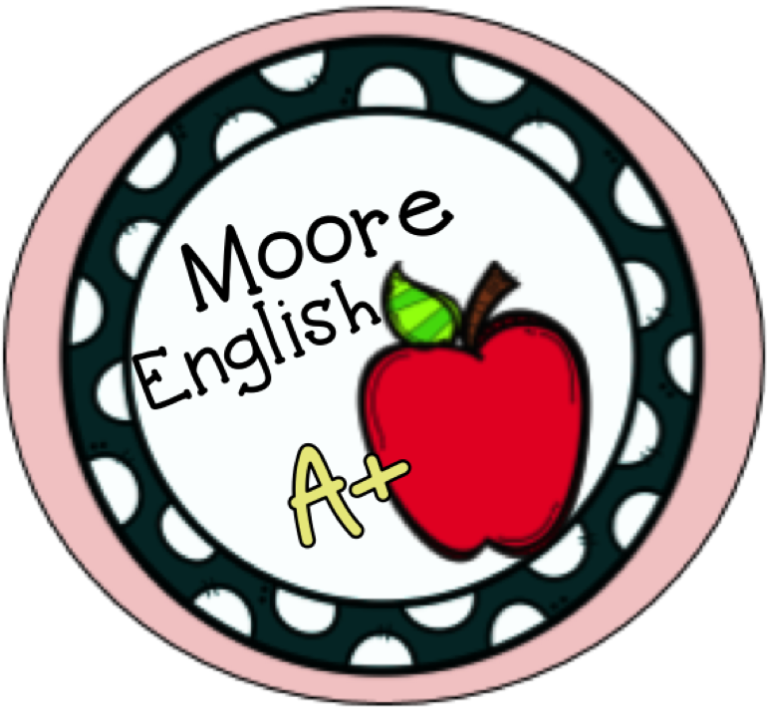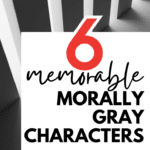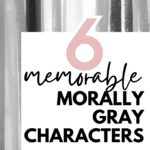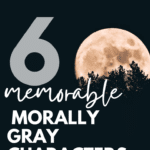Over the past few weeks, I’ve shared must-read static and dynamic characters to challenge students. However, morally-gray characters are equally important for our students. Perhaps more than other archetypes, morally-gray characters are complex, compelling, and relatable.
Few people can be purely honorable like Brutus or absolutely depraved like Poe’s Eagus, but most of us can relate to human foibles and struggles with moments of weakness and power.
With all that in mind, I want to share 6 morally-gray characters that will challenge your students!
This post this post may contain affiliate links. Please read the Terms of Use.
Can heroes be morally-gray characters?
A few weeks ago when I sat down to write about static and dynamic characters, I really struggled with two classic heroes: Odysseus and Beowulf.
Both characters struggle with hubris, and I’m not convinced either of them really learn their lesson. For example, Odysseus’ boastful nature gets him into tangles with monsters like the Cyclops. When he finally returns to Ithaka, he seeks bloody vengeance (which readers are supposed to accept without question because the suitors are depicted as uniformly terrible). But does that really prove that he has changed and developed? I’m not so sure. For all these reasons, Odysseus makes for a fascinating morally-gray character to discuss with your students.
Like Odysseus, Beowulf struggles with extraordinary pride. His pride leads him to fight Grendel and eventually Grendel’s Mother (which is my favorite fight in the epic because the entire thing happens under water while the main character is wearing chain mail). When he ages and becomes king, Beowulf still decides to fight a dragon alone even though he is older and weaker (which, again, we’re not supposed to question because his men are now cowards). Sure, when Wiglaf shows up, Beowulf accepts his help, but at that point he’s pretty near death. Is that enough to call him dynamic? Again, I’m not so sure, which is why I enjoy discussing this morally-gray character with my students.
Shakespeare’s Morally-Gray Characters
I don’t think anyone does morally-gray characters quite like William Shakespeare. Many of his royal characters become strong dynamic characters (otherwise he’d offend his patron), but some of his most well-known characters are less clear cut.
When I started thinking about static characters, I initially thought of Lady Macbeth. After all, she’s pretty terrible from the moment she appears on stage. However, as her guilt begins to sink in, she starts to wash her hands and eventually takes her own life. Does guilt make her a static character, especially if most of that guilt only exists in her subconscious and unconscious (asleep) state?
Similarly, I struggle with identifying Macbeth as a dynamic character. Macbeth doesn’t consider becoming king until he meets the witches and doesn’t think of regicide until his wife suggests it. Toward the end of the play, he seems to accept his death but then duels Macduff. To my mind, none of that makes Macbeth truly dynamic. After all, he was always weak-minded and susceptible. He waffles, so he might be one of the great morally-gray characters.
Finally, Romeo and Juliet are two of Shakespeare’s most polarizing characters. One one hand, they fall in love, which must change someone. However, they never truly grow. Yes, they decide to sacrifice their lives, but they never evolve. They begin the play impulsive and reckless, and that’s how they die. Nevertheless, these are two classic morally-gray characters.
I would love to know what you think about these morally-gray characters!

